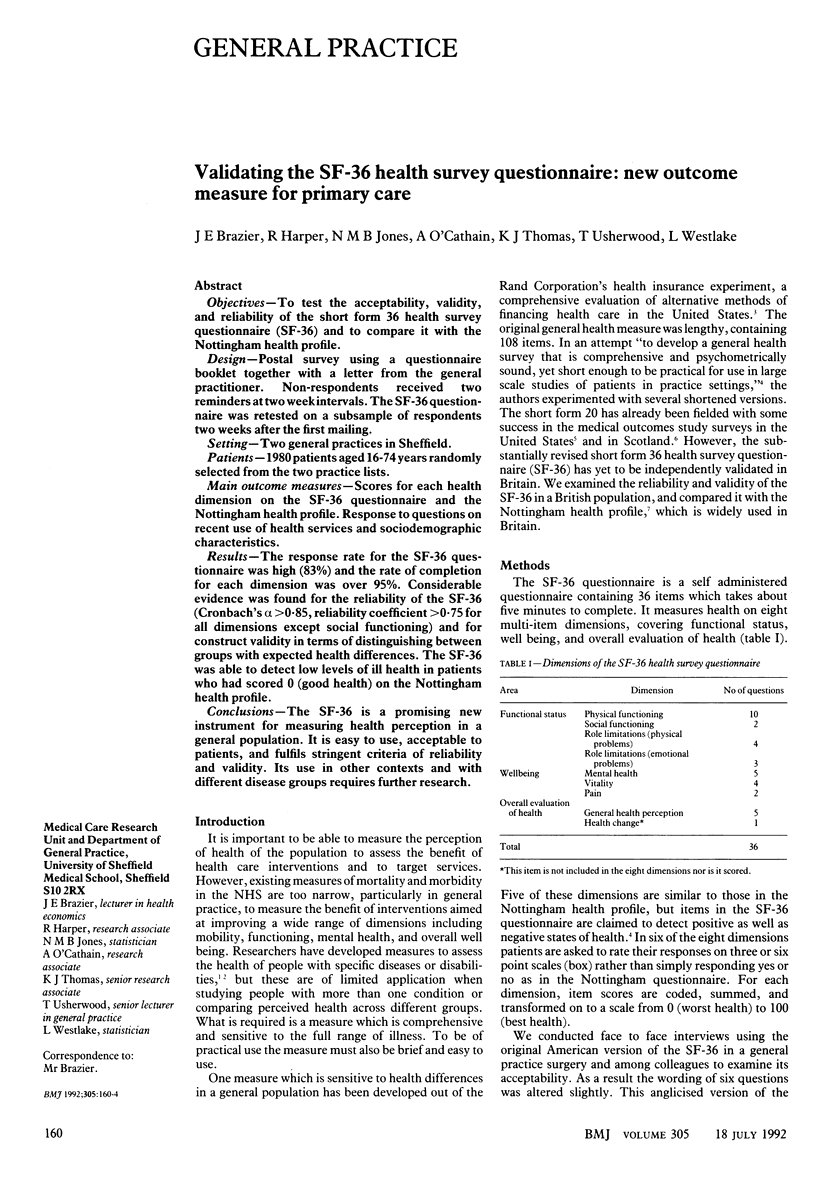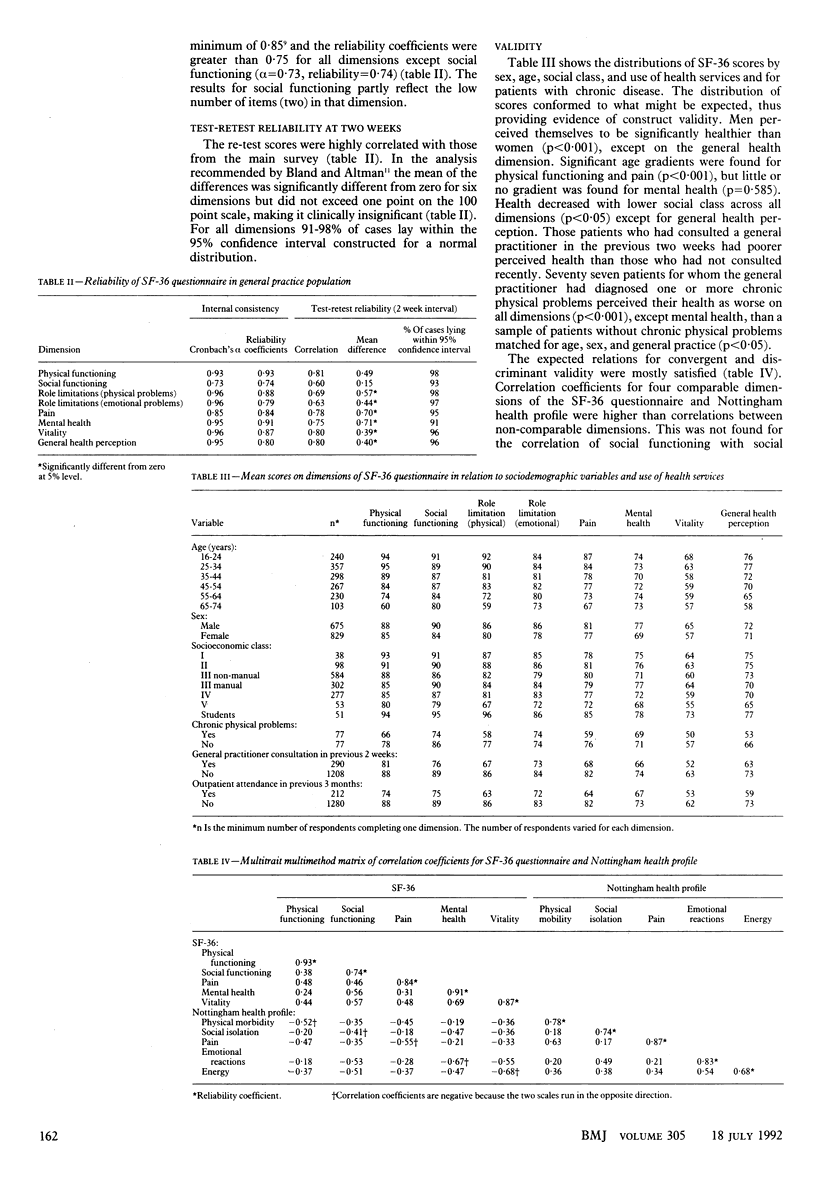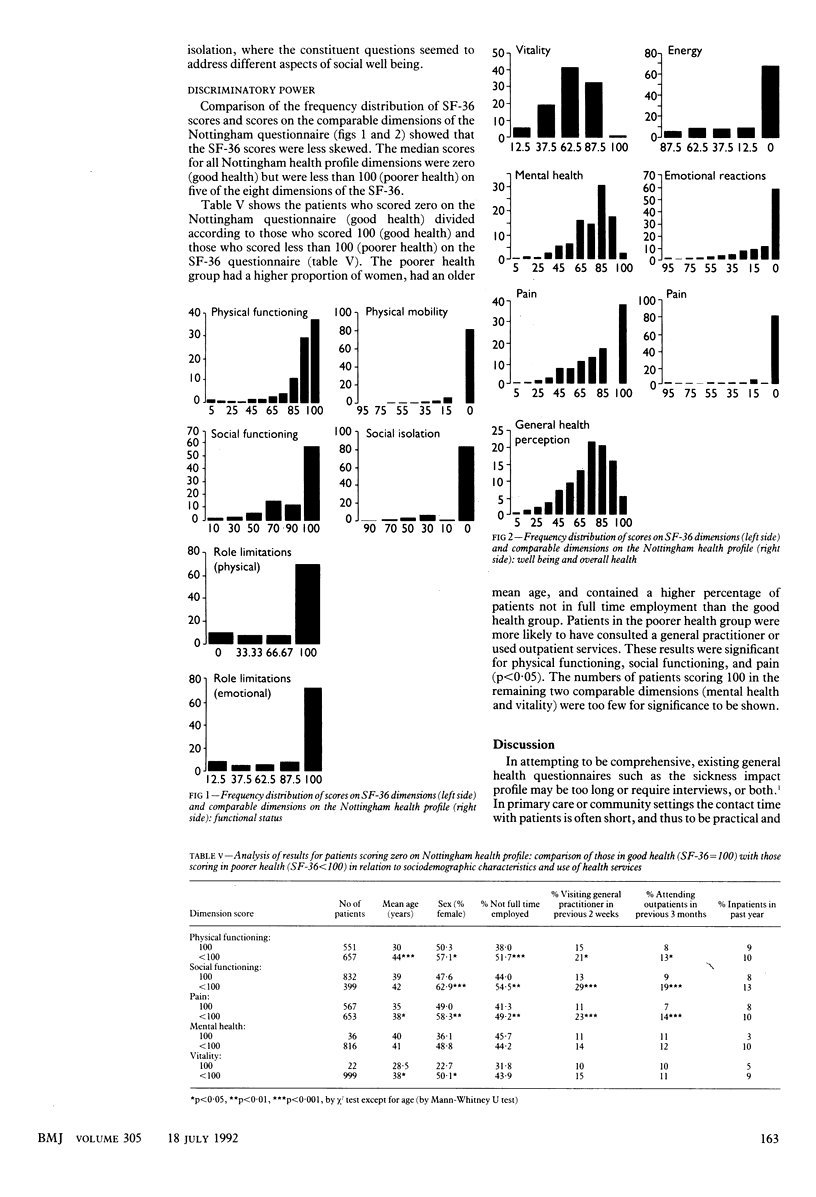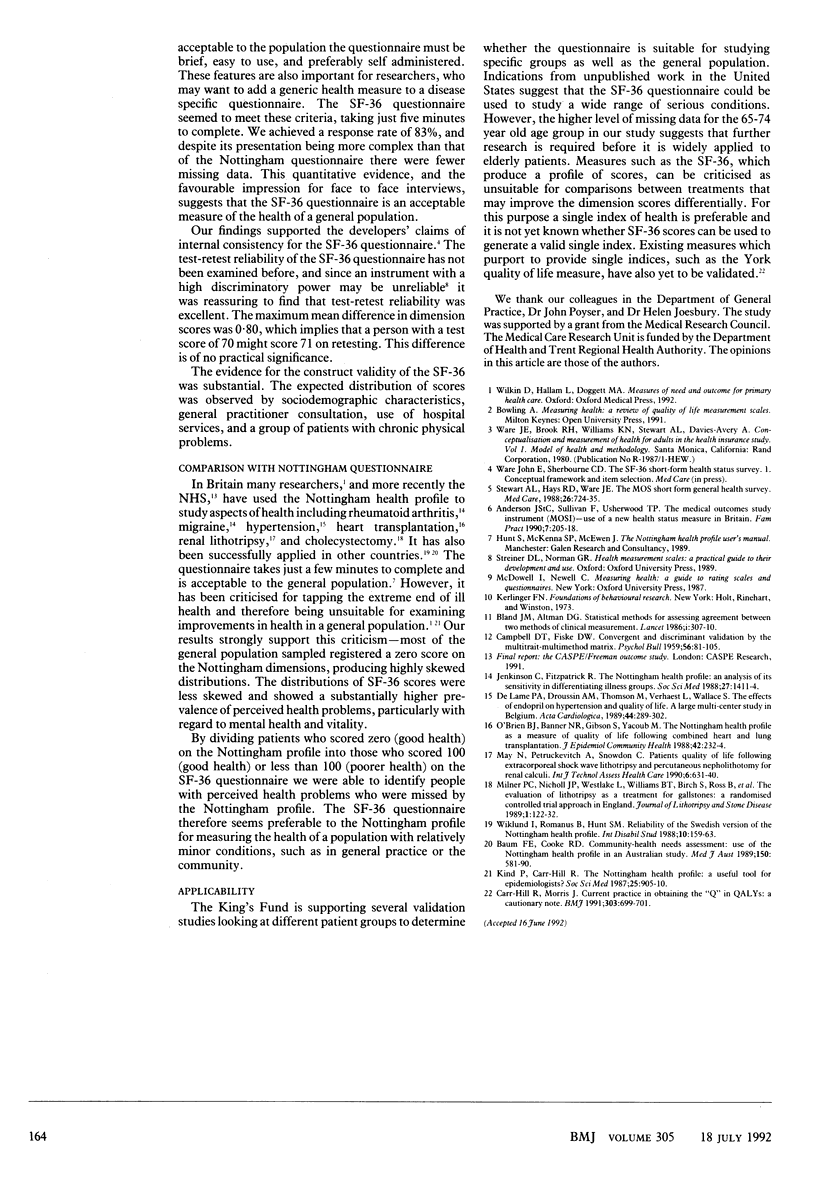Abstract
OBJECTIVES--To test the acceptability, validity, and reliability of the short form 36 health survey questionnaire (SF-36) and to compare it with the Nottingham health profile. DESIGN--Postal survey using a questionnaire booklet together with a letter from the general practitioner. Non-respondents received two reminders at two week intervals. The SF-36 questionnaire was retested on a subsample of respondents two weeks after the first mailing. SETTING--Two general practices in Sheffield. PATIENTS--1980 patients aged 16-74 years randomly selected from the two practice lists. MAIN OUTCOME MEASURES--Scores for each health dimension on the SF-36 questionnaire and the Nottingham health profile. Response to questions on recent use of health services and sociodemographic characteristics. RESULTS--The response rate for the SF-36 questionnaire was high (83%) and the rate of completion for each dimension was over 95%. Considerable evidence was found for the reliability of the SF-36 (Cronbach's alpha greater than 0.85, reliability coefficient greater than 0.75 for all dimensions except social functioning) and for construct validity in terms of distinguishing between groups with expected health differences. The SF-36 was able to detect low levels of ill health in patients who had scored 0 (good health) on the Nottingham health profile. CONCLUSIONS--The SF-36 is a promising new instrument for measuring health perception in a general population. It is easy to use, acceptable to patients, and fulfils stringent criteria of reliability and validity. Its use in other contexts and with different disease groups requires further research.
Full text
PDF




Selected References
These references are in PubMed. This may not be the complete list of references from this article.
- Anderson J. S., Sullivan F., Usherwood T. P. The Medical Outcomes Study Instrument (MOSI)--use of a new health status measure in Britain. Fam Pract. 1990 Sep;7(3):205–218. doi: 10.1093/fampra/7.3.205. [DOI] [PubMed] [Google Scholar]
- Baum F. E., Cooke R. D. Community-health needs assessment: use of the Nottingham health profile in an Australian study. Med J Aust. 1989 May 15;150(10):581, 584, 587-90. doi: 10.5694/j.1326-5377.1989.tb136696.x. [DOI] [PubMed] [Google Scholar]
- Bland J. M., Altman D. G. Statistical methods for assessing agreement between two methods of clinical measurement. Lancet. 1986 Feb 8;1(8476):307–310. [PubMed] [Google Scholar]
- CAMPBELL D. T., FISKE D. W. Convergent and discriminant validation by the multitrait-multimethod matrix. Psychol Bull. 1959 Mar;56(2):81–105. [PubMed] [Google Scholar]
- Carr-Hill R. A., Morris J. Current practice in obtaining the "Q" in QALYs: a cautionary note. BMJ. 1991 Sep 21;303(6804):699–701. doi: 10.1136/bmj.303.6804.699. [DOI] [PMC free article] [PubMed] [Google Scholar]
- Jenkinson C., Fitzpatrick R., Argyle M. The Nottingham Health Profile: an analysis of its sensitivity in differentiating illness groups. Soc Sci Med. 1988;27(12):1411–1414. doi: 10.1016/0277-9536(88)90207-9. [DOI] [PubMed] [Google Scholar]
- Kind P., Carr-Hill R. The Nottingham health profile: a useful tool for epidemiologists? Soc Sci Med. 1987;25(8):905–910. doi: 10.1016/0277-9536(87)90260-7. [DOI] [PubMed] [Google Scholar]
- O'Brien B. J., Banner N. R., Gibson S., Yacoub M. H. The Nottingham Health Profile as a measure of quality of life following combined heart and lung transplantation. J Epidemiol Community Health. 1988 Sep;42(3):232–234. doi: 10.1136/jech.42.3.232. [DOI] [PMC free article] [PubMed] [Google Scholar]
- Stewart A. L., Hays R. D., Ware J. E., Jr The MOS short-form general health survey. Reliability and validity in a patient population. Med Care. 1988 Jul;26(7):724–735. doi: 10.1097/00005650-198807000-00007. [DOI] [PubMed] [Google Scholar]
- Wiklund I., Romanus B., Hunt S. M. Self-assessed disability in patients with arthrosis of the hip joint. Reliability of the Swedish version of the Nottingham Health Profile. Int Disabil Stud. 1988;10(4):159–163. doi: 10.3109/09638288809164068. [DOI] [PubMed] [Google Scholar]
- de Lame P. A., Droussin A. M., Thomson M., Verhaest L., Wallace S. The effects of enalapril on hypertension and quality of life. A large multicenter study in Belgium. Acta Cardiol. 1989;44(4):289–302. [PubMed] [Google Scholar]


